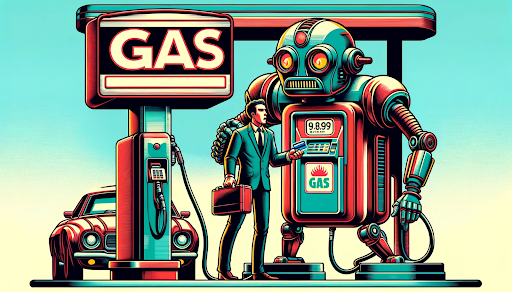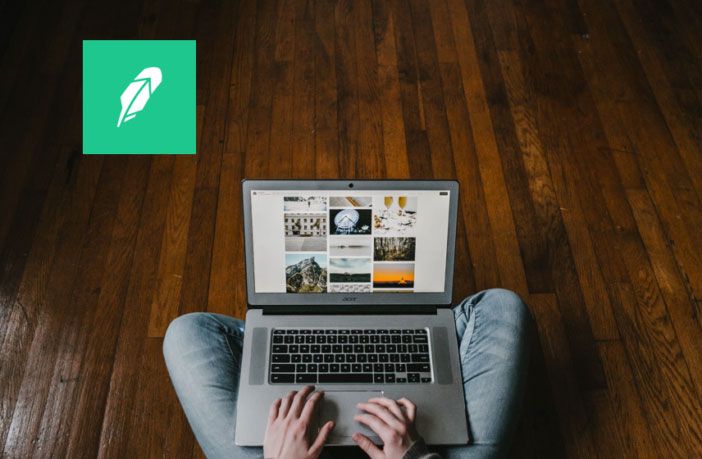Editor’s Note: Overdraft Apps provides detailed product reviews and recommendations based upon extensive research and our own hands-on testing. We may earn a referral fee when you sign up for or purchase products mentioned in this article.
We all know the frustration of needing a little more cash to pay a bill or make a small purchase before payday arrives. When you need a few extra bucks to see you through to your next paycheck, an overdraft can help. An overdraft is a line of credit to cover your transaction or withdrawal when there isn’t enough money in your bank account – but there can be significant fees to be aware of. This guide looks at how overdrafts work, how to stop going over your limit, and tools to help you get the cash you need without paying sky-high overdraft fees.
Imagine lining up for a $4 cup of coffee…
You step up to the barista and pay with your debit card. You don’t know it, but there isn’t enough cash in your bank account to pay for that coffee – your balance may even already be below zero. But no worries! Instead of declining the transaction, your bank approves the electronic payment, enters your account into overdraft, and hits you with a $35 overdraft fee.
Congratulations. You just paid $39 for your cup of coffee.
This may sound like an uncommon situation – but overdraft fees cost consumers $33 billion in 2020 alone. A supposed “customer service” advantage, most banks and credit unions will strongly encourage you to enroll your checking account in their overdraft protection program so that you can still use your account even when your balance is below $0. While this can be helpful and convenient when you’re in a pinch and need a little more cash, you can quickly find yourself owing hundreds of dollars in overdraft fees just by slightly over-spending for a day or two.
Put simply, overdrafts may be an easy way to avoid the embarrassment and inconvenience of not being able to pay for something, but they are an expensive way to borrow. Though an overdraft seems helpful to an account holder, costs can quickly spiral out of control if overdrafts aren’t managed promptly and properly.
So, are overdrafts a peace of mind service that helps you pay your bills, or a “gotcha” service applied by banks who let you overdraw your account then punish you with sky-high fees?
Read on to find out everything you need to know to make take advantage of overdrafts to get cash when you need it, while minimizing or even avoid overdraft fees.
What we’ll cover:
- What are overdrafts?
- Should you enroll in your bank’s overdraft protection program?
- What are overdraft fees?
- How much is the average overdraft fee?
- What is the difference between overdraft fees and NSF fees?
- What does TOT ODP SWP CR Memo mean?
- What happens if you don’t pay back your overdrafts or overdraft fees?
- Bonus: Overdraft fee hack
- Can you overdraft a debit card on purpose?
- Do ATMs let you overdraft?
- Banks that let you overdraft right away
- How to get your overdraft fees refunded
- Guide to overdraft apps
What are overdrafts?
An overdraft is a small, instant loan from your bank to ensure that payments you’ve instructed your bank to make are successfully completed. An overdraft allows you to use your debit or ATM card or pay bills even when you don’t have enough money in your bank account to cover the transaction.
Overdrafts are a convenience that can help you avoid cash-flow problems. Some of the advantages an overdraft provides include:
- Prevents bouncing a check to a friend or merchant
- Enable on-time payments for an automated bill or credit card payments (and avoid costly late fees and interest charges)
- Allow you to withdraw cash from an ATM even though your account balance will be negative
- Provide you with instant funds for emergency purchases
- Approve debit card purchases so you can buy what you need
You can overdraft your account through checks, ATM withdrawals, debit card purchases, automatic bill payments, and electronic or in-person withdrawals. Overdrafts are a convenient way to avoid the frustration, expense, and embarrassment of declined transactions due to insufficient funds. However, overdrafts are rarely free — most banks and credit unions will also charge you an overdraft fee (in addition to requiring payment of the overdraft amount).
It’s worth noting that some banks are getting more lenient about overdraft fees as consumers and public debate push back against this controversial fee. The Biden administration and Congress continue to pressure banks to justify why they charge high fees to customers with insufficient funds.
95% of overdraft fees are paid by consumers described as ‘financially vulnerable’, so it’s clear that overdraft fees affect lower-income households at risk of financial hardship (particularly Black and Latinx households according to the latest industry figures).
Debate continues if overdrafts are harmful or helpful – through public discourse and at Government levels – but it pays to know how to shop for the right overdraft solution to ensure you’re in control of your spending, your financial health, and not buying a $39 cup of coffee.

What are overdraft fees?
As mentioned, an overdraft occurs when there isn’t enough money in your account to cover a transaction, so your bank lends you the difference so the charge can go through. An overdraft fee is then charged as a result of taking your account into the negative meaning you need to repay the overdraft AND your overdraft fee.
For example, let’s say you have $50 in your account but you use your debit card, write a check, or pay a bill online worth $100. The bank will cover your $50 difference to ensure your transaction is successfully processed. In addition, your bank will charge an overdraft fee (typically $35). The $50 overdraft plus $35 overdraft fee means you owe $85 to your bank.
If you have multiple overdraft transactions in one day, you may be hit with multiple fees. Banks will generally cap the number of overdraft fees that you’ll be charged in a single day, commonly at four to six fees. However, that means that a handful of small charges on your debit card while your account balance is negative could cost you a whopping $210 in overdraft fees!
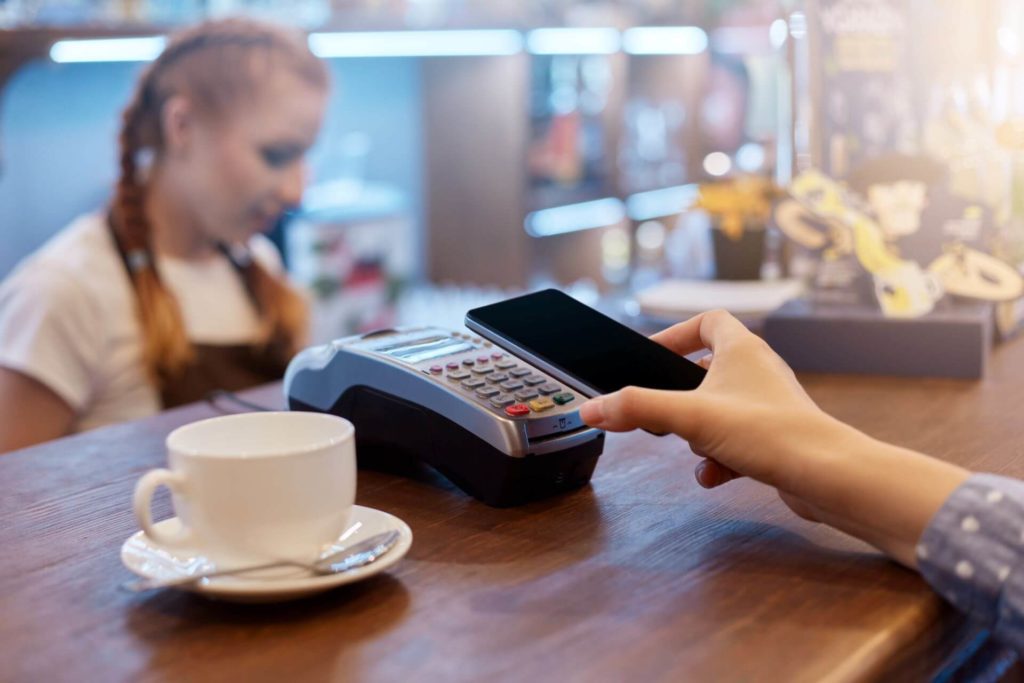
Understanding overdraft protection laws
Overdraft fees and the law can be complicated, so summing up the experts, here’s the simple version.
Overdraft protection regulations prevent banks from automatically enrolling you in overdraft coverage and charging overdraft fees. This protects you against endless overdraft fees, however, there are gray areas.
In 2010, the Federal Reserve declared that a bank MUST reject a transaction if an account holds insufficient funds to process the transaction. This protects you from being charged overdraft fees without your consent, but it also means that if a transaction will push your balance below zero, your bank likely will decline it.
You can choose to opt-in to overdraft coverage if you prefer to ensure transactions are processed successfully. Once you’ve opted into overdraft protection, you can still pay for what you want up to a certain limit (determined by your bank) – and you’ve agreed to be charged overdraft fees for the service.
Before opting in, a bank must explain their overdraft protection services, including disclosing any fees associated with the program, as well as your consumer choices. These rules, along with an example opt-in notice, are issued under Regulation E, which implements the Electronic Fund Transfer Act, and outlines the rules and procedures for electronic fund transfers.
So, what’s the catch?
It’s important to note, this overdraft protection legislation only applies to transactions that are not pre-authorized. These include debit card transactions and ATM withdrawals. Pre-authorized withdrawals – such as bill payments and checks, do NOT fall under these regulations and can still incur overdraft fees without an opt-in process. If you have set online automated bill payments or choose to pay with a check (for example, to pay rent), you are not under the umbrella of overdraft protection and may still be charged overdraft fees.
And if you don’t opt into an overdraft protection program, every payment processed with insufficient funds will fail/checks will bounce and you will be charged an insufficient funds (NSF) fee if your bank charges them (more on NSF fees below).
It’s important to understand where you are protected against overdraft fees to make sure you are in control of your money.
To summarize, some overdraft fees can be avoided by opting out of overdraft coverage. Other overdraft fees, like those on automatic payments and checks, may be applied without consumer consent.
Should you enroll in your bank’s overdraft protection program?
An overdraft protection program automatically transfers funds from a linked account to your overdrawn account. Your bank will usually charge you for this service, but the cost is usually less than an overdraft fee. For example, the Bank of America charges a $12 fee per transfer – which still stings – but is less than the average $35 overdraft fee.
The linked account is typically a savings account, but you can link a secondary checking account, credit card, or line of credit.
An overdraft protection program can ensure you don’t get rejected for a debit card purchase or ATM withdrawal. If you want to access cash that isn’t in your account, this can be a convenient service – but there are pros and cons to consider.
| PROS | CONS |
| ✔ Successful transactions when low on funds | ✘ May be declined if linked account is empty |
| ✔ Fees are typically less than overdraft fees | ✘ Won’t eliminate fees entirely |
| ✔ Provide access to funds in an emergency | ✘ May encourage overspending |
Deciding whether overdraft protection is right for you will be a personal decision. An overdraft protection program can help avoid the embarrassment of a declined card transaction. More importantly, it can stop an empty account from overdrawing and turning your $4 morning coffee into a $39 cup of coffee.
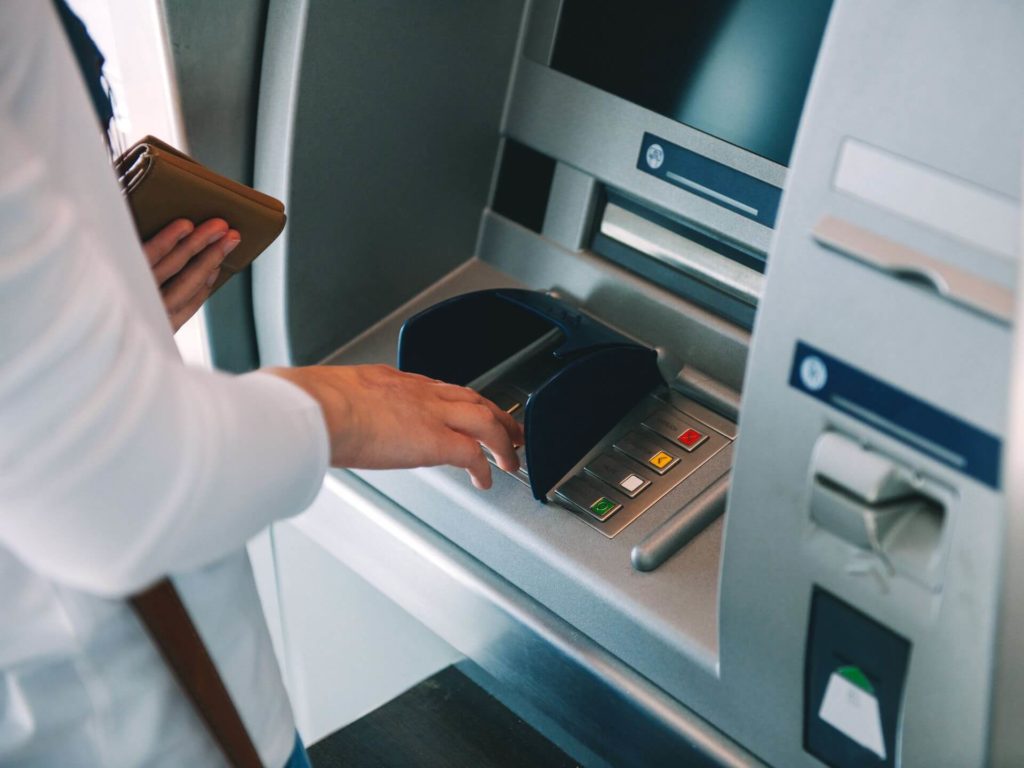
Comparing bank overdraft fees
An overdraft fee is one of the most expensive fees that your bank may hit you with, but not all charge the same amount.
The average overdraft fee is $33.58 according to Bankrate’s 2021 checking account and ATM fee study. However, overdraft fees have risen over the past two decades and vary from bank to bank.
Most banks will let you know when you have overdafted. But there’s a catch. These notifications may not be until the end of a business day which means you may have processed multiple transactions in that time. Depending on how often you swipe your card, you can be authorizing your bank to charge you steep overdraft fees without knowing it.
It’s worth noting that there are banks that are reducing or eliminating overdraft fees. Some banks provide overdraft fee relief if your balance is negative by less than $5. Other banks will permit a short grace period – this may be the end of the day or a 24-hour period – to bring your account back into positive territory without incurring any fees.
Capital One has joined a growing list of banks eliminating overdraft fees which signal welcome relief for consumers. While overdraft fees may be a convenience for some, studies reveal that the majority of overdraft fees are incurred on transactions of $24 or less (meaning consumers are paying more in fees than they are in purchases).
How much is the average overdraft fee? Comparing the top U.S banks
Fees vary across each financial institution, though the average overdraft fee is $33.58 (up slightly from last year’s average of $33.47).
As you use your bank’s overdraft program to access a little extra cash while your account has a negative balance, you are likely being charged a premium for convenience. This means your short-term cash flow needs are a significant money-maker for banks.
Here’s an overview of the overdraft fees for major financial institutions.
| Bank | Overdraft Fee | Max Fees Per Day | Maximum Possible Daily Fees |
| Ally Bank | $0 | – | |
| Associated Bank | $35 | 4 | $140 |
| Bank of America | $35 | 4 | $140 |
| BB&T | $36 | 6 | $216 |
| BBVA Compass | $38 | 6 | $228 |
| BMO Harris Bank | $36 | 4 | $144 |
| Boeing Employees Credit Union | $25 | 5 | $125 |
| Capital One 360 | $0 | – | – |
| Charles Schwab | $25 | 4 | $100 |
| Chase | $34 | 3 | $102 |
| Citibank | $0 | – | – |
| Citizens Bank | $35 | 5 | $175 |
| Connexus Credit Union | $4 | 2 | $8 |
| Fifth Third Bank | $37 | 5 | $185 |
| HSBC Bank | $35 | 3 | $105 |
| KeyBank | $38.50 | 3 | $115.50 |
| M&T Bank | $38.50 | 5 | $192.5 |
| Navy Federal Credit Union | $20 | 1 | $20 |
| PNC Bank | $36 | 4 | $144 |
| Regions Bank | $36 | 6 | $218 |
| Santander Bank | $15 | 3 | $45 |
| SunTrust | $36 | 6 | $218 |
| TD Bank | $35 | 5 | $175 |
| TIAA Bank | $30 | 2 | $60 |
| Union Bank | $33 | 6 | $198 |
| USAA | $29 | 3 | $87 |
| U.S. Bank | $36 | 4 | $144 |
| Wells Fargo | $35 | 3 | $105 |
As the table above shows, many banks can charge you multiple overdrafts in a single day (often without warning) which is where things can get *really* expensive *really* fast.
This is part of the frustration of overdraft fees, as the fee can be significantly more than the cost of an attempted transaction. If you have $10 in your checking account but attempt to make a $15 transaction, you might be charged an overdraft fee (see the table above). This seems fair, but part of the frustration with overdraft fees is that you can end up owing significantly more than the amount you were trying to spend.
For example, SunTrust charges account holders $36 per overdraft on up to six transactions in a single day. That’s $216 in fees to cover what could be as low as tens of dollars in transactions. More than chump change, overdraft fees represent a huge profit center for banks that see a 40% uptick in overdraft fee revenue year on year.
DID YOU KNOW: A prominent former bank CEO named his boat ‘Overdraft’ to celebrate the revenue made through overdraft fees. That’s what overdraft fees are worth to banks (and bank CEOs).
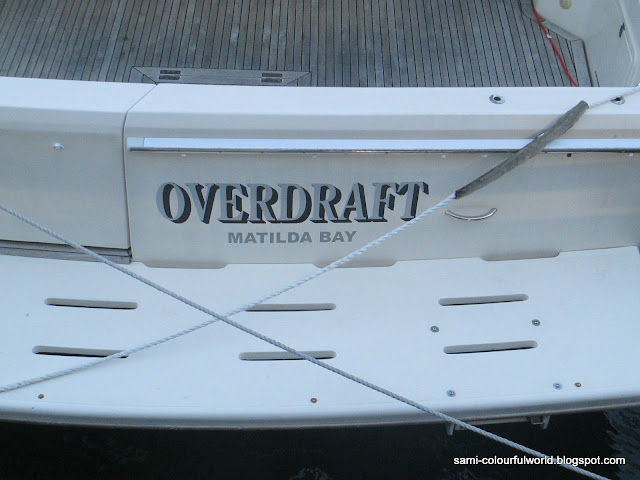
Overdraft Case Study: Ally Bank was the first (meaningfully sized) bank to eliminate overdraft fees
Despite overdraft fees increasing by 64% compared to COVID-19 lows, the landscape isn’t all doom and gloom. Ally Bank provides a case study of a bank eliminating overdraft fees on all accounts.
In response to the Coronavirus pandemic, Ally Bank temporarily suspended overdraft fees as part of a larger relief program to help customers manage COVID-19 and the financial pressures it may have brought on. Remember, this occurred within the bigger picture of $33 billion in overdraft fees coming from the nation’s banks during the height of the pandemic.
Later, Ally Bank decided to make the temporary suspension of overdraft fees permanent, signaling a potential shift in the way banks approach overdrafts.
“Eliminating these fees helps keep people from falling further behind and feeling penalized as they catch up”, explains Ally Financial CEO, Jeffrey Brown. “Nationwide, more than 80% of overdraft fees are paid by consumers living paycheck to paycheck or with consistently low balances — precisely the people who need help stabilizing their finances”.
Prior to this change in overdraft policy, Ally Bank charged $25 for overdrawing an account. Going forward, Ally Bank says they will approve small transactions facing insufficient funds, while larger transactions will be denied.
In making this announcement, Ally Bank joins a growing list of banks and financial institutions eliminating overdraft fees including major banks like Capital One (the sixth-largest retail bank in the United States), as well as digital-only finance firm Alliant.

What is the difference between overdraft fees and NSF fees?
If you’re stretching your budget from paycheck to paycheck, you’re not alone. In fact, an estimated 56% of Americans live paycheck to paycheck. So if your finances become stretched you’re likely accustomed to the term ‘overdraft’ by now.
However, there’s a related term to be aware of…
NSF fees.
NSF, short for non-sufficient funds or insufficient funds fee (depending upon your bank), is a fee charged when the holder of a checking account is overdrawn.
“How is that different from an overdraft fee?”
In an overdraft scenario, your transaction is approved and paid despite your lack of funds (with an overdraft fee applied). However, in the case of an NSF, the financial institution typically rejects the transaction before applying an NSF fee. So your transaction not only doesn’t go through, but you get to pay your bank a fee as well! You may also incur bounced payment and/or late fees from the intended recipient of the payment. Not good times.
Colloquially, NSF checks are known as “bounced checks” or “bad checks”. So if a bank receives a check written on an account with insufficient funds and you aren’t enrolled in your bank’s overdraft protection program, or you have exceeded the overdraft limit that the bank has set on your account, it will refuse payment and charge you an NSF fee.

NSF Example
Johnny wrote a check for $3,000 to a tiling contractor. However, Johnny only had $2,500 in his checking account. Johnny’s bank returned the check stamped with ‘NSF’ as there were non-sufficient funds and deducted $38 from his account in NSF fees. This made the contractor pretty grumpy and he stopped working on Johnny’s house for a few days.
Johnny went to his bank to deposit enough money to cover his NSF fee and the total owed to his tiling contractor. Johnny wrote a second check, knowing he had sufficient funds in his account, which was cleared with no NSF fees incurred. The contractor got back to work and installed a beautiful new kitchen floor.
What does TOT ODP SWP CR Memo mean?
If you’ve been dealing with overdraft fees, the following scenario will feel familiar. You’re scanning your bank account statement and come across a string of letters that don’t make sense – TOT ODP SWP CR memo.
It’s tough to know what this refers to (and even tougher to make sense of the letters at all), but this abbreviation is a term you’ll need to wrap your head around. The TOT ODP SWP CR Memo is your bank letting you know your account has been overdrawn and placed in overdraft protection (ODP = Overdraft Protection).
This means your transaction has been approved, but you’ll need to bring your account balance back to zero and pay the overdraft fee too. The TOT ODP SWP CR Memo is included on your bank statement to let you know of this overdraft action and the fee that’s been deducted from your account.
Along with ‘overdraft fees’ and ‘NSF fees’, it’s helpful to add ‘TOT ODP SWP CR Memo’ to your list of important terms to make sure you’re aware of what your bank is charging you and why.
What happens if you don’t pay back your overdrafts or overdraft fees?
An overdrawn bank account has a range of potential consequences – none of which are appealing – and it doesn’t take long to spiral into even more fees and account restrictions. While excess charges can sound like a worst-case scenario, there are actually far more negative consequences to be aware of.
Remember, you are charged an overdraft fee because your bank account has a negative balance. This overdraft fee pushes your balance even *further* into the negative, so you’ll need to pay more just to get your account balance back to zero. Your next paycheck or deposit may get mostly eaten up just by repaying your overdrawn balance and fees.
But what happens if you don’t promptly balance your account and leave your overdrafts unpaid?
Unsurprisingly, the consequences can be severe. Here are some of the possible ramifications of unpaid overdrafts.
✘ Ongoing charges: If your account stays overdrawn for at least 5 to 8 days, you’ll be charged Extended Overdraft Fees. These vary by bank. For example, many banks and financial institutions will charge another $35 fee. Others will charge a daily fee (e.g. BB&T charges $8 per day until your overdrawn account is returned to zero).
✘ Loss of overdraft privileges: Unpaid overdrafts will lead to a loss of overdraft accessibility. While your bank may allow your account to be overdrawn for 24 to 48 hours, you won’t be able to pay bills, use your debit card or withdraw further funds.
✘ Suspension or closure of your bank account: If your account remains negative for 30 to 120 days (this depends on the bank), things start getting serious. Your bank may permanently close your account and pursue you for reimbursement of your negative balance via a collections agency or potentially even a lawsuit. This will put you on the hook for even steeper collection costs and fees and may lead to your account being referred to a debt collection agency, and potentially even a lawsuit.
Plus, collections and lawsuits are reported to the three major credit bureaus (Equifax, Experian, TransUnion) and can substantially lower your credit score, which will make it harder and more expensive for you to obtain additional credit, such as personal loans, mortgages, or credit cards.
✘ Effective ban from the banking system: Worst of all, if your bank closes your account involuntarily, you will be reported to ChexSystems, a credit reporting agency for bank accounts. This can effectively prevent you from opening another account at most banks for years to come!
It’s not worth the risk.
With banks so willing to enroll you in their overdraft protection program, and seemingly slow to collect it may seem tempting to purposely overdraft your account and then walk away from it. Although extending your account to access fast funds may seem like ‘Free Money’, overdrawing your account with zero intention of paying it back will likely get you banned from the banking system and can even be a crime. You may think you are being clever but there is nothing you can come up with that the banks haven’t seen 100 times already.
If you want to continue to access funds without falling afoul of your bank, there are plenty of strategies you can utilize to manage your overdrafts and avoid what some call a “tax on the poor”.
Looking for a detailed timeline? Here’s your 60-day timeline when you don’t pay your overdraft fees
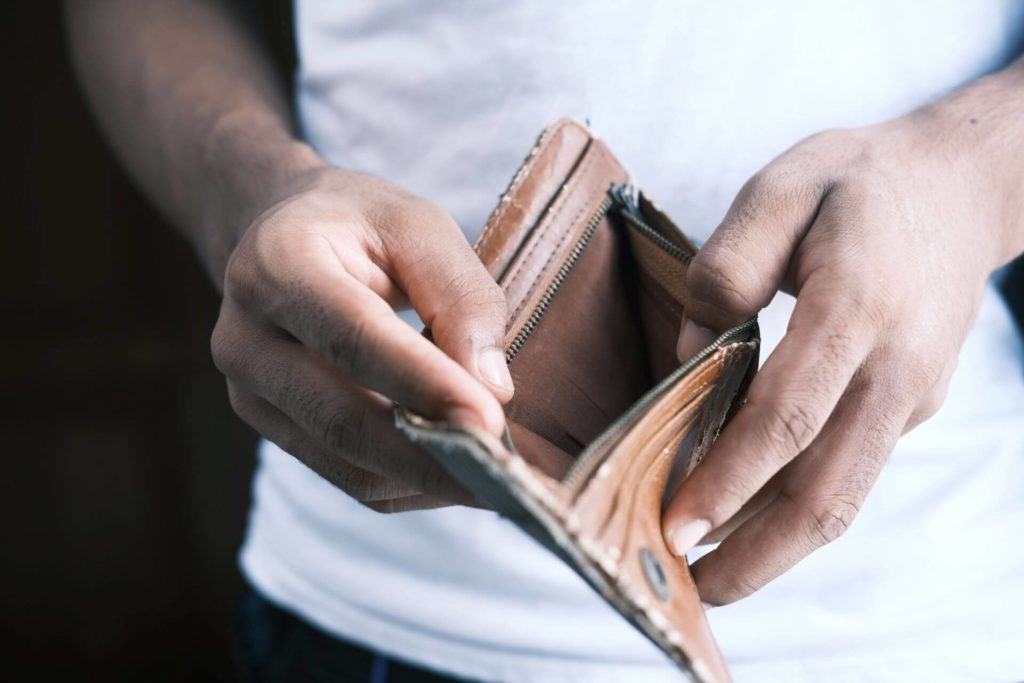
How to avoid overdraft fees
Overdrafts are a convenient but expensive form of credit. The easiest way to avoid overdraft fees is to avoid spending more than you have available. But that’s easy advice to give and harder to implement. 63% of Americans admit to living paycheck to paycheck since the start of the COVID-19 pandemic. Realistically, there may come times when you *need* to overdraw your account.
Enrolling in overdraft protection services can help you manage your account. But if you do choose to opt-in to overdraft protection, there are practical steps you can take to manage your overdrafts. If you’ve been using your overdrafts to manage and supplement your income, consider the following strategies to continue paying your bills without falling into a financial black hole.
➤ Know your bank’s overdrawing options
Banks require you to choose whether you’d like to enroll in their overdraft protection program. The easiest way to avoid overdraft fees is to opt out of your bank’s overdraft program. Keep in mind, this means you won’t be able to pay for transactions when there are insufficient funds in your account.
If you do choose to enroll in your bank’s overdraft program, read the terms and conditions CAREFULLY. It would be best if you looked to understand the limits, terms, and fees fully. For example, are ATM withdrawals, automated payments, and/or debit card payments covered by the overdraft protection plan? The more you know about your bank’s overdraft policies, the easy it is to work with them.
➤ Link a savings account to your checking account
Once you link a checking and savings account, you can make electronic transfers to cover any shortfalls. It’s possible to link accounts from the same bank or even different banks, for example, a brick-and-mortar bank and an online bank. This can help you avoid taking the hit of overdraft fees.
If you have multiple accounts at the same bank (such as savings and checking accounts), many banks will allow you to link them as part of an overdraft protection program. This means the amount required to fund a transaction through your checking account will be transferred from your savings account automatically. This may occur with no extra fees or charges. However, some banks may add a Transfer Fee (usually around $12 compared to a $35 overdraft).
➤ Limit overdraft transactions
Some banks, like Wells Fargo, give you the option of setting up overdraft protection for checks and bill payments (so you don’t get a late fee from the cable company), but not on debit card transactions. This can help you avoid buying that $39 cup of coffee that can sting unsuspecting consumers. But you can still cover the important transactions that would end up incurring *more* fees and charges if left unpaid.
➤ Set up account alerts
Most people end up with overdrafts because they don’t know what their account balance is. (Quick: do you know your *exact* account balance right now?). You can stay on top of your funds and avoid overdraft fees by setting up text or email alerts that remind you when your balance is low to avoid overdrawn transactions.
Setting up account notifications can be done in the ‘Account Settings’ on your online banking app. Once you’ve found your alert settings, you can turn on alerts for specific dollar amounts that trigger a notification. Many banks offer the choice of text or email notifications, as well as push notifications from your mobile banking app.
➤ Take advantage of grace periods
Some banks will allow you to make a quick deposit so your account isn’t overdrawn and you avoid unnecessary fees. For example, PNC’s ‘Low Cash Mode’ service gives you a range of safety nets to avoid spiraling overdraft fees. These include a 24-hour grace period to return your balance to $0, customized alerts when your account balance is low, $0 non-sufficient fund fees, and a maximum of one overdraft fee per day ($36).
A growing number of banks are offering their customers ways to avoid overdraft fees. Citizens Bank is another example, offering ‘Citizens Peace of Mind’ which lets customers roll back their overdraft charges if they return their balance to zero by the end of the next business day. As the backlash against overdraft fees continues, these types of anti-overdraft services should become more common.
➤ Access a small credit line
Although overdrafts are a form of credit, you don’t need to fill out a loan application and the funds are instantly available in your bank account without factoring in a credit score. Some banks will offer small credit lines as a lesser-known credit option.
Instead of a traditional fixed or variable-rate loan, a line of credit is a flexible loan for a defined amount of money to be repaid either immediately or over time. For example, Bank of America’s Balance Assist product allows you to borrow up to $500 which can be paid back in three installments for just a $5 fee – though you’ll need to be a Bank of America customer for at least 12 months and meet their credit criteria to qualify.
➤ Watch out for delayed transactions
A growing number of merchants, including Amazon, are making it easer to shop online and pay with your checking account number. This is especially convenient if you don’t have or want to use credit card or debit card to pay for purchases, but it can also lead to unexpected overdrafts. These transactions usually won’t hit your bank account for several days, so make sure that you have – and maintain – a sufficient balance until your purchases are processed by your bank.
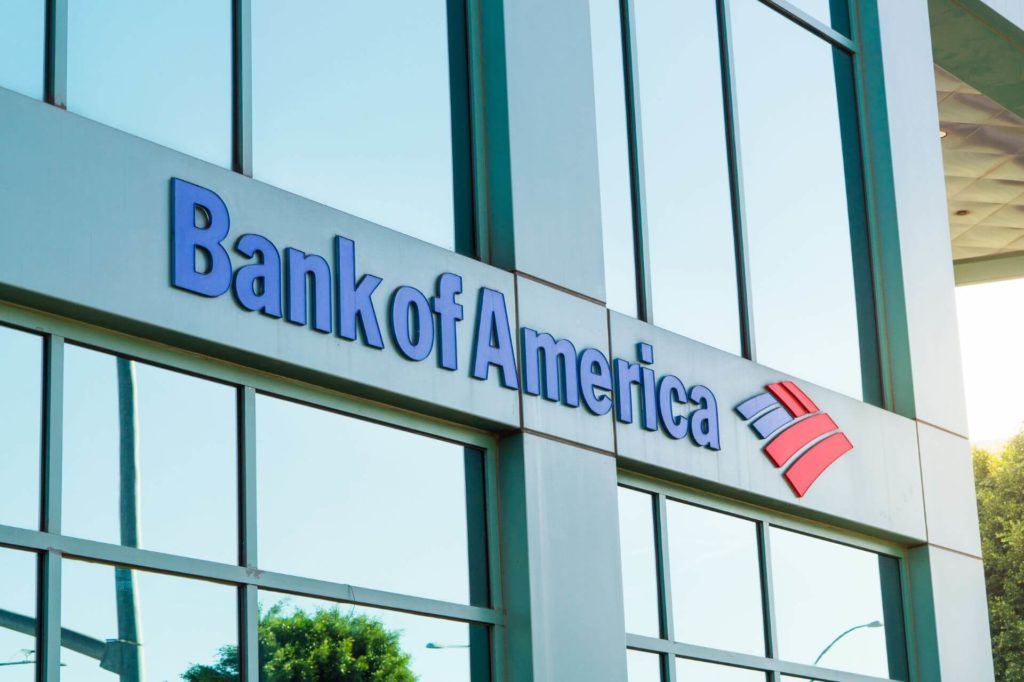
Bonus Overdraft Fee Hack: Learn how your bank processes transactions
Understanding your bank’s overdraft policies and using them to your advantage can not only help you reduce fees, with some banks you can even work the system and frequently overdraft with no fees at all! The secret is in understanding how your bank orders your transactions.
How?
Banks process transactions against your account in a daily batch. So it generally doesn’t matter what time of day you make a transaction, the bank will process them all on the same day. But the order in which the bank processes them varies by bank and if you understand how this works, you can use this hack to minimize or even avoid overdraft fees!
A consumer-friendly bank will process the smallest transactions first. This means the maximum number of transactions will clear and your overdraft fees will be minimized.
For example, let’s say you have $400 in your account and in one day incur transactions for $300, $200, $10, $5, and $2. If your bank processes the smallest transactions first they will take out $2, $5, $10, and then $200 for a total of $217 successfully processed. This leaves your remaining balance at $283. When your bank tries to process the $300 charge, they will overdraw you, resulting in one overdraft fee.
In contrast, unfriendly banks will process the largest transactions first which means your account balance only covers one charge (the $300 charge) before going into overdraft on the following four transactions. This leaves you with multiple overdraft fees.
| Customer-Friendly Bank | Unfriendly Bank |
| Account Balance = $400 | Account Balance = $400 |
| ✔ $2 | ✔ $300 |
| ✔ $5 | ✘ $200 (OVERDRAFT) |
| ✔ $10 | ✘ $10 (OVERDRAFT) |
| ✔ $200 | ✘ $5 (OVERDRAFT) |
| ✘ $300 (OVERDRAFT) | ✘ $2 (OVERDRAFT) |
| One Total Overdraft Fee = $35 | Four Total Overdraft Fees = $140 |
Can you overdraft a debit card on purpose?
In short, yes.
But if you’re wondering how to overdraw a debit card on purpose you’ll need to make sure you’ve opted in for this option at your bank.
Remember, the 2010 Federal Reserve rules prohibit financial institutions from charging fees automatically on debit card transactions and ATM withdrawals. This means you can successfully complete your transaction to pay for your groceries or gas by overdrawing on your debit card as long as you have opted in to overdraft coverage and agreed to pay overdraft fees. In this case, you will incur an overdraft fee, but you’ll be able to go home knowing you’ve paid for crucial shopping, food, or other necessities.
Again, overdrawing on a debit card is an ‘opt-in’ feature only. Your bank can not charge your overdraft fees on debit card transactions unless you’ve chosen to participate in this service. If you haven’t chosen to overdraft on your debit card, debit card transactions will typically be declined.
This is in contrast to overdrawing a checking account or automatic bill payment where your bank’s overdraft program will cover the transaction then charge you an overdraft fee.
Looking to learn more about overdrawing on your debit card? Check out the Definitive Guide to Debit Card Overdrafts here
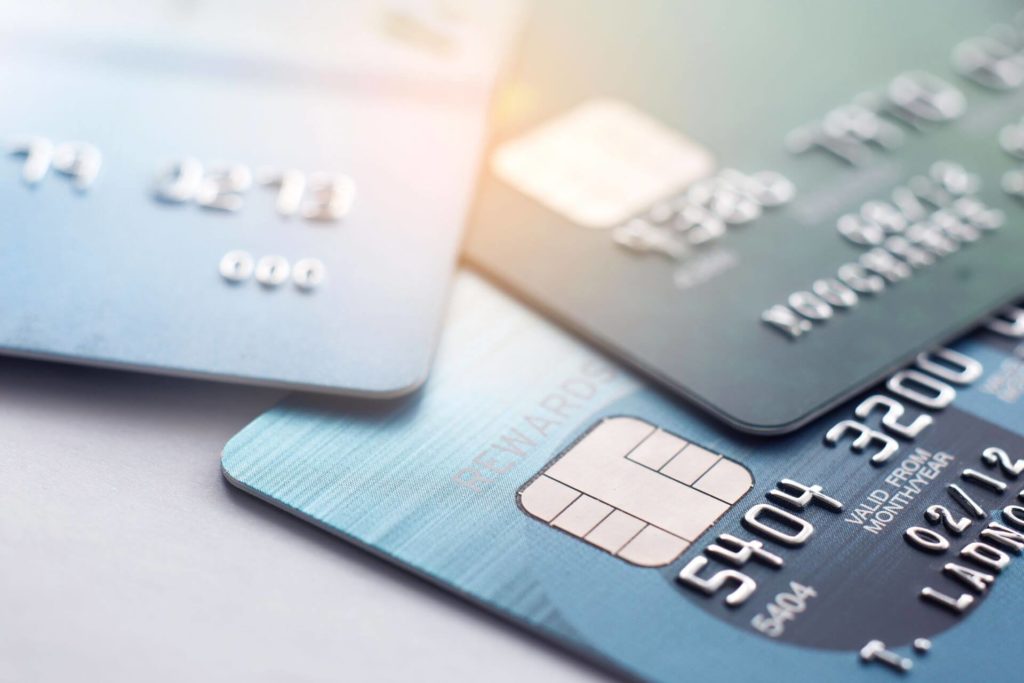
Do ATMs let you overdraft?
Again, the answer is ‘yes’, though you’ll need to give your bank permission to charge you fees in the event of an ATM withdrawal using insufficient funds. If you’ve given your bank permission to enroll you in an overdraft protection program, you may find using an ATM to be a more cost-effective strategy than using your debit card.
Why?
Because each overdrawn transaction incurs a fee (at an average of $35). Overdrawing on 5 x debit card purchases would mean paying five overdraft fees ($175). In contrast, you could withdraw cash from an ATM and pay for multiple purchases while paying just one overdraft fee ($35).
Keep in mind that all overdrafts are at your bank’s discretion. So just because your bank let you withdraw money previously while your account was overdrawn, it doesn’t necessarily mean that you’ll have that opportunity in the future.
Will banks let you overdraft right away?
You might be wondering how soon you can overdraft and which banks are suited for fast cash. While individual banks and financial institutions will have their own policies regarding overdraft timelines, it’s safe to say banks that let you overdraft right away without direct deposit are few and far between. The majority will not allow you to go into negative before you’ve made an initial deposit; some will also require your account to age for several weeks or months.
You’ll also need to take into account the time needed to complete the necessary paperwork before you can access “fast cash”. To set up an account with overdraft protection may take several business days, and is not the ideal scenario if you need fast cash. Keep in mind, new accounts will always be subject to strict policies at a bank. This means your bank may choose to decline overdraft transactions at its discretion – even if it will typically pay these transactions on more established accounts!
Overdrawing a new account can negatively impact your ability to access overdrafts in the future. It can also limit your access to complementary and non-complementary products and lower fees.

Can you ask for a refund on overdraft fees?
Getting overdraft fees refunded from your bank isn’t as difficult as it may seem. While not every financial institution will have a policy for returning overdraft fees, there are steps you can take to have your money refunded (or at least give yourself a shot of a refund).
If you’ve been charged an overdraft fee, it’s too late to waive the amount. But you can work towards a refund. 58% of Americans have called their banks to try and get overdrafts reversed. This process isn’t as complex as you may think, and there are multiple steps you can take which we have outlined below.
Step One: Add up your fees
Before speaking with your bank, it helps to know what total overdraft fees you have been charged, why you were charged, and when those charges occurred. Knowing what transactions contributed to your overdraft fees can help you quickly communicate with your financial institution’s customer service representative to work towards an overdraft refund.
You can typically find your account transactions and overdraft fees in your bank statements (either online or mailed).
Step Two: Contact your bank
With your figures at the ready, it’s time to get in touch with your bank. Although all banks and financial institutions have chatbots and online agents, it’s best to pick up the phone and request a refund the old-fashioned way. Contact your bank’s primary customer service line (which can be found on your bank statements or bank’s website) and explain your situation calmly and politely.
Be clear that you’re only requesting a one-time exemption and explain your situation to show why this is extenuating circumstances. You will likely have more luck if you’re a longtime customer, but since you can’t control this, focus on staying professional and outlining why you feel an exemption is warranted on this one occasion.
Step Three: Be persistent (but realistic)
The customer service representative you speak to might be your first level of resistance. Don’t give up! If the agent on the phone won’t budge, try asking to speak with a supervisor or calling back at a later time to speak to someone else. Most banks don’t want to lose customers, so it’s in their best interest to keep you happy, which is why you need to be persistent with your requests.
It’s also helpful to be realistic about your refund request. One successful refund request per year is a reasonable expectation, so if you’re finding yourself dealing with excess overdraft fees, it’s better to learn how to avoid them in the first place.
BEFORE YOU GO…learn how to get overdraft fees waived [step-by-step guide]

How to stop paying overdraft fees (while still getting the cash you need)
Overdraft fees are often avoidable by making a few simple changes to your financial habits. For example, tracking your balance, opting out of overdraft protection, setting up alerts, and even switching banks. But these all miss one crucial feature – you don’t get the cash you need!
Avoiding overdrafts is easy with the above changes, but they don’t help you manage your cash shortage problems. If you want to skip the common fees and charges while still getting the funds you need to pay your bills and live your life, you’ll need to consider a few other strategies.
Short-term loans
Short-term loans are suitable for individuals as well as businesses and provide temporary personal or business capital up to $2,500. As a type of credit, the loan typically involves repaying the principal amount plus interest by a given date. In most cases, a short-term loan is paid off over installments across a number of weeks or months.
| Pros | Cons |
| ✔ Fast and easy online application process | ✘ Short-term loans carry a high interest rate* |
| ✔ Access cash to cover your needs (up to $2,500) | ✘ Applying may damage your credit score |
| ✔ Repay in multiple installments | ✘ Not suitable for larger cash flow issues |
Looking for a short-term loan approved in minutes?
PockBox unlocks cash advances of up to $2,500 in minutes. The process is quick and straightforward, so start with some simple information about yourself, and the PockBox app will connect you to the best lenders and approve you in a matter of minutes.
CLICK HERE FOR UP TO $2,500 IN MINUTES

Cash advance apps
Cash advance apps let you borrow a small amount from your next paycheck. Valuable when you don’t want to take out a personal or payday loan, cash advance apps are a new breed of apps that help you manage your money and prevent cash flow issues before your next pay lands in your bank account. It’s important to look into your preferred cash advance app as this emerging market is fairly limited. Some cash advance apps have sky-high fees (that can hurt worse than overdraft fees), and others are payday loans (with high fees and easy rollovers to leave you deeper in debt).
The best cash advance apps like MoneyLion and Dave let you access the money you’ve earned into your bank account before payday at a nominal fee, but without interest which would be payable on a payday loan. These types of cash advance apps are an inexpensive alternative to payday loans and endless credit cards.
Some of the most popular cash advance apps include:
| Pros | Cons |
| ✔ Same-day access to extra funds | ✘ Amounts available are capped and fairly low* |
| ✔ Much more affordable than overdraft fees | ✘ Many apps charge a monthly fee ($1 to $5) |
| ✔ Fees are typically low (may have voluntary ‘tips’) | ✘ Most require direct deposit of your paycheck |
Are you a little short this month? Discover the BEST cash advance apps of 2022 [COMPLETE LIST]
Payroll services
A continuation of the new breed of instant pay apps, several major payroll services now let eligible employees access their paycheck early to bridge any cash flow issues. On-demand pay gives employees access to their earned wages (instead of waiting two weeks to release funds) and can help workers avoid overdraft fees or payday loans.
In the era of same-day shipping or on-demand movies, early access payroll services allow employees of participating companies to access income as it is earned – not at the end of a predefined pay cycle. This means employers don’t need to change their payroll schedule but integrate on-demand pay services into their existing payroll to support staff in need of fast cash.
Payroll services offering early pay based on accrued wages include:
| Pros | Cons |
| ✔ Highly convenient option for employees | ✘ Some programs may carry fees |
| ✔ Can be built into the company’s payroll | ✘ Employers learn about money management issues |
| ✔ Improve workplace relationships and retention | ✘ May encourage bad spending habits |
Do overdrafts affect your credit score?
Overdrawing an account and realizing you’ll be hit with overdraft fees can sting, but can it affect your credit score too?
An overdrawn checking account typically won’t impact your credit score. Your credit report records any credit cards or loans you’ve taken out. But overdrafts are pulling money from your checking account – and those aren’t included on your credit reports (because you’re not borrowing from anyone).
However, failure to pay back your overdraft fees can affect your credit if you don’t balance your account. Outside of your credit score, you can also pop up on the radar of the banking reporting bureau, ChexSystems. ChexSystems monitors your deposit accounts and tracks account activity like unpaid negative balances, bounced checks, and overdrafts. If your ChexSystems report shows a history of irresponsible account use you may find it tougher to open another bank account.
Dealing with bad credit but need a loan? Find out the quick and easy solution here
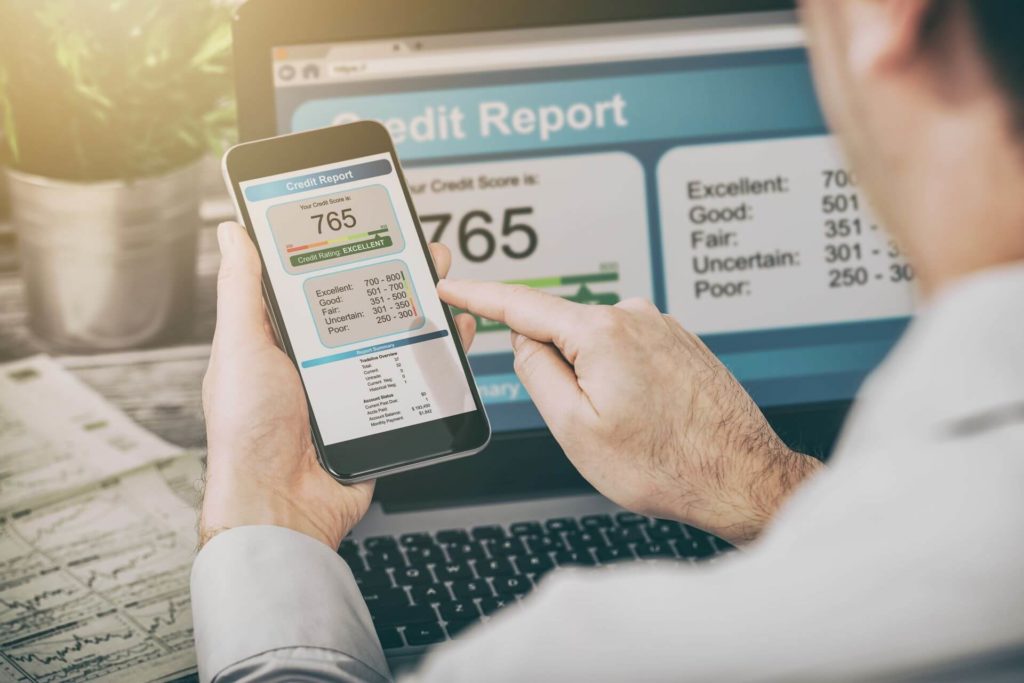
Final thoughts: What to do next…
The bank overdraft landscape is changing at a rapid pace. As mentioned, Capital One became the first major bank to completely eliminate overdraft fees and non-sufficient (NSF) fees – and they won’t be the last.
JPMorgan Chase has announced they’ll be giving account holders more ways to avoid overdraft fees, joining the trend of smaller and online banks already eliminating overdraft fees. Does that mean you can forget about paying overdraft fees? Not quite.
Although banks are slowly decreasing the scope and severity of overdraft fees, the truth is that those fees are a steady and reliable form of revenue. Your bank may move towards low, or no-cost overdrafts. Or, it may stick with fees up to $35 per overdrawn transaction. And suggesting you “stop spending more than you have” is an oversimplification that doesn’t apply to millions of Americans living paycheck to paycheck.
Instead, managing overdraft fees comes down to understanding your rights and obligations, as well as knowing how to access cash to cover your needs without putting you in financial trouble. Though overdrafts may not seem like much when there’s an extra $35 fee added to your account, ongoing overdrafts can quickly add up and become a serious problem.
If over drafting is something you’ve experienced in the past, consider an alternative solution whether that’s linking an eligible account, setting account alerts to avoid low balance transactions, or accessing cash advance apps for up to $2,500 fast.
Although overdraft fees pose a financial challenge, knowledge is power. Take what you’ve learned in this guide and use it to your advantage. When you understand your options, you’ll feel in control of your financial health and be on your way to the peace of mind that comes with a successful purchase, a lack of overdraft fees, and an appropriately priced coffee.
WAIT! Why borrow quick cash when you can earn it?!
Cash advance apps can be a great tool for getting a little extra cash when you need it, but you’ll need to repay it – plus fees – wihtin a week or two. Did you know there’s an easy way to earn extra cash that’s yours to keep?

KashKick is a wildly popular service that lets you earn money for playing games, completing surveys, signing up for trial offers and more. (You’ll even earn cash for just completing your profile!) You can earn cash today and withdraw your earnings through PayPal once you’ve reached $10. You can earn over $100/month with KashKick – and you don’t need to spend a dime or take out your credit card to do it.
There are dozens of high-paying offers available on KashKick, and if you’re into playing new games on your phone, you can earn some serious cash for doing what you love. Though offers change regularly, there are currently1 more than three dozen offers available where you can earn cash – sometimes over $100 – just by downloading and playing popular games like Coin Master, Monoply Go, Bingo Blitz, and more. These games are all free to download, and no in-app purchases are required to earn with KashKick.
Get paid to play on your phone >>> Check out KashKick
- As of February 13, 2024. Offers may change and may not be available to all users. Eligibity requirements apply. See KashKick's Terms of Service for full details.


